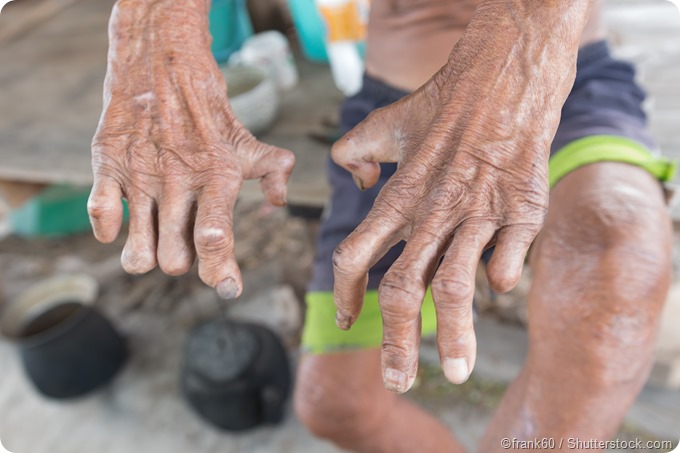Introduction
It is a chronic, mild infectious disease of man that affects the peripheral nervous system, the skin and certain other tissues of the body causing discoloration and lumps on the skin. In severe cases, leprosy causes disfigurement and deformities.
Causative Agent: Mycobacterium leprae
Incubation period: 2-5 years
Mode of transmission
- Direct contact with untreated lepromatous patient’s discharges from the nose.
- Through fomites of an infected person.
Pathophysiology
M. Leprae invades via the nasal mucosa and haematogenously spread to skin and nerves. They invade peripheral nerves where the temperature is lower than core body temperature.
The organism produces anaesthesia along distribution of its cutaneous innervations. Then paralysis and deformity follow sensory loss.
Types of Leprosy
1. W.H.O classification
- Paucibacillary leprosy(PBL)
- Slit smear negative.
- Person with this kind of leprosy has less than 5 patches/skin lesions.
- Multibacillary leprosy (MBL)
- Slit smear positive.
- Person with this kind of leprosy has more than 5 patches/skin lesions.
- Indeterminate leprosy
- Often goes unrecognized.
- Lesion is usually poorly defined.
- Disease usually regresses with spontaneous healing of the lesion.
- Tuberculoid skin lesions
- Lesions arc large and well defined.
- Single or few in number.
- It is usually benign.
- Lepromatous lesions
- Numerous lesions with poorly defined margins.
- Muscle weakness and paralysis.
- Lesions are limited to the cooler portion, of the body e.g. testis, skin, URT etc.
- Dimorphous (Borderline)
- This is between the two major forms which are tuberculiod and lepromatous.
- Clinical features represents a combination of the two principal types.
- This depends upon whether treatment is received or not.
Clinical features
- Definite loss of sensation in a skin patch (cardinal sign).
- Evidence of peripheral nerve involvement (cardinal sign).
- Positive slit skin smear (cardinal sign).
- Numbness.
- Nasal obstruction with epistaxis.
- Painless would on a hand or foot.
- Large ear lobes (bat ears).
- Orchitis.
- Hoarse voice.
Diagnosis; is based on the cardinal signs.
Medical treatment
- It is a long term treatment with the drugs. Dapsone and Rifampicin with or without clofazimine are used.
- Alternative drugs are Ethionamide or protionamide.
- Isolation of patient in leprosarium is no longer necessary because within 72hrs of starting chemotherapy, they are non-infectious.
- The treatment last for 6 months in paucibacillary skin lesion and then 12 months for multibacillary lesions.
Nursing Management
- General nursing care of patients with infectious disease.
- Give psychological care.
- Physical care.
- Patient & relative education.
Prevention
- Prophylaxis with Dapsone.
- Immunization with BCG.
- Treat infected persons.
- Health education.
Read Also








0 Comments